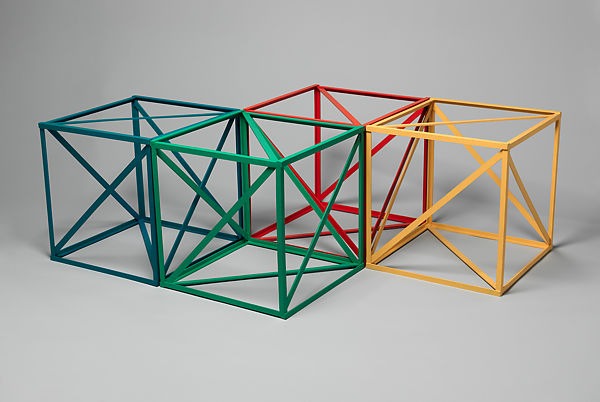Home Is a Foreign Place
Recent acquisitions in Context
09 Apr 2019 - 21 Jun 2020
HOME IS A FOREIGN PLACE
Recent acquisitions in Context
9 April 2019 – 21 June 2020
Home Is a Foreign Place highlights recent acquisitions of modern and contemporary art from Latin America, the Middle East, North Africa, and South and Southeast Asia, alongside works by iconic modern American artists from The Met collection. Taking its title from Zarina's 1999 suite of thirty-six woodcuts, this exhibition features art that explores the meanings of "home" and "place" in our increasingly interwoven globe, whether by necessity or choice.
Contemporary art and earlier avant-garde movements of modern art do not have a single origin, nor do they develop in isolation. Since the 1940s, artists have sought new forms of expression as they have lived through culturally transformative events, from devastating wars, social and humanitarian injustices, and mass migration to economic and environmental change. These histories continue to impact and inform the art of our time. In this thematic display, works are united by shared engagements with language, architecture, space, and politics that demonstrate the movement of ideas and identities across cultural and national boundaries. The resulting visual conversations emphasize the significance of parallel artistic impulses in the world and over time, while remaining attentive to the specific local and historical circumstances of their making.
Recent acquisitions in Context
9 April 2019 – 21 June 2020
Home Is a Foreign Place highlights recent acquisitions of modern and contemporary art from Latin America, the Middle East, North Africa, and South and Southeast Asia, alongside works by iconic modern American artists from The Met collection. Taking its title from Zarina's 1999 suite of thirty-six woodcuts, this exhibition features art that explores the meanings of "home" and "place" in our increasingly interwoven globe, whether by necessity or choice.
Contemporary art and earlier avant-garde movements of modern art do not have a single origin, nor do they develop in isolation. Since the 1940s, artists have sought new forms of expression as they have lived through culturally transformative events, from devastating wars, social and humanitarian injustices, and mass migration to economic and environmental change. These histories continue to impact and inform the art of our time. In this thematic display, works are united by shared engagements with language, architecture, space, and politics that demonstrate the movement of ideas and identities across cultural and national boundaries. The resulting visual conversations emphasize the significance of parallel artistic impulses in the world and over time, while remaining attentive to the specific local and historical circumstances of their making.

